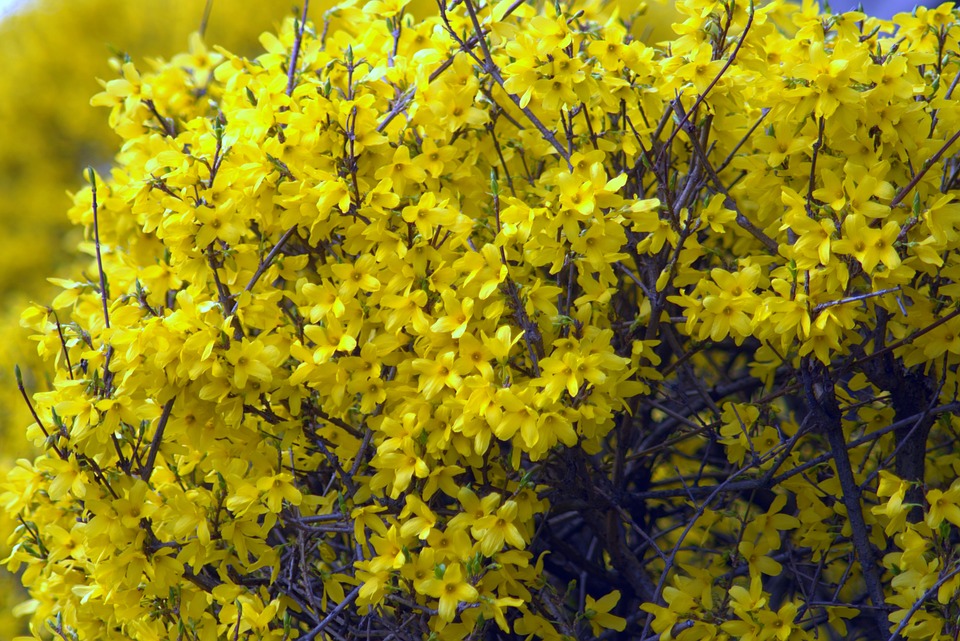Forsythia x intermedia

Other Name
border forsythia
Sun Requirements
full sun, part sun
Bloom Period and Seasonal Color
Spring with yellow blossoms
Mature Height x Spread
6 to 10 feet x 6 to 10 feet
Added Benefits
drought tolerant
One of the most noteworthy flowering shrubs in spring, forsythia is a widely grown plant throughout our region. The brilliant yellow blooms appear before the leaves emerge creating a yellow snowstorm of color. It is certainly an amazing site, but unfortunately, it may bloom sporadically in colder regions and after flowering is over, forsythia simply is a nondescript green shrub in the landscape. It is commonly grown because of the ease of growing. The shrub is cold tolerant, grows in most soils and easily propagates itself by rooting its stems along the ground. If it gets out of hand forsythia can easily be cut back severely to regrow and bloom again next year.
When, Where and How to Plant
Forsythia shrubs are hardy throughout New England, but the flower buds may not be. Select varieties in colder parts of our region known to have cold hardy flower buds or all you’ll get in spring is green leafy growth. Purchase shrubs from local garden centers and plant from spring to early fall. Plant in full sun for best flowering, on well-drained, compost amended soil. Space plants 6 to 10 feet apart. Grow them closer together if forming a hedge.
Growing Tips
Water new plants well. Once established, forsythia can be drought tolerant. Apply mulch, such as wood chips or bark mulch, to keep competing weeds away. Fertilize lightly in spring with compost
Regional Advice and Care
Forsythia seems to be everywhere in spring in our region. Unfortunately, unless the flower buds were protected by snow or we had a mild winter, they often don’t flower well. The plant can also get unruly without periodical pruning. Prune after flowering to thin out the branches and reduce the height. Avoid shearing the plant. You can also cut the whole plant back severely to bring it under control and rejuvenate the shrub. Forsythia has few pest problems.
Companion Planting and Design
In a mixed shrub border, plant forsythia with other flowering shrubs that bloom later such as lilac and spirea. Consider planting spring flowering bulbs, such as tulips, crocus, and hyacinth, in front of forsythia for the complimentary colors. Plant forsythia has a visual screen in a hedge to block an unsightly view. To give the corner of the yard a splash of spring, plant forsythia in groups in out of the way locations or plant it as a ground cover to cascade over a wall.
Try These
‘Lynwood’ is a popular variety with tall upright growth and purple-tinged fall foliage. ‘Arnold Dwarf’ is a low growing, 3-foot tall variety that grows well as a ground cover, but doesn’t flower as profusely as taller varieties. ‘Meadowlark’ and ‘Northern Sun’ are varieties with good flower bud tolerance to cold temperatures and more likely to flower in northern landscapes.
Excerpted from my book, New England Getting Started Garden Guide.


